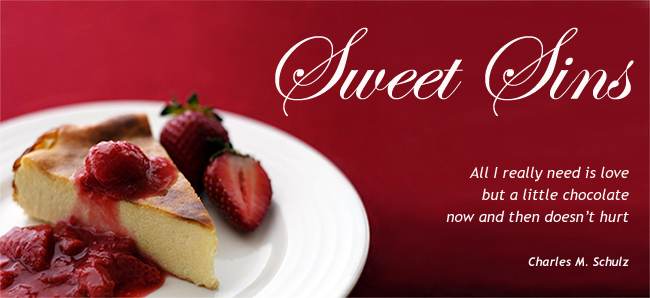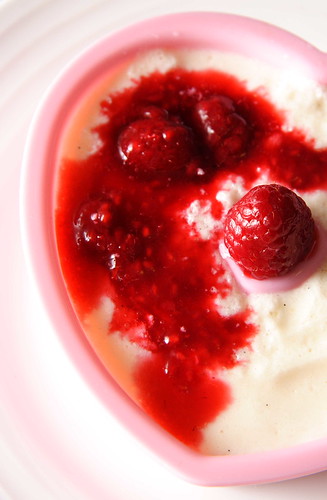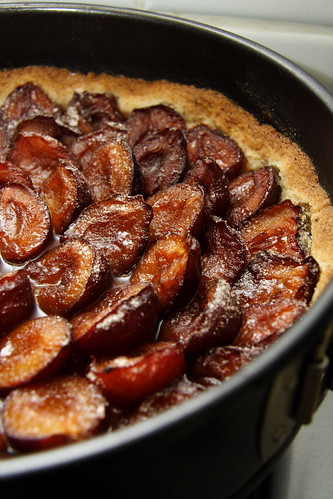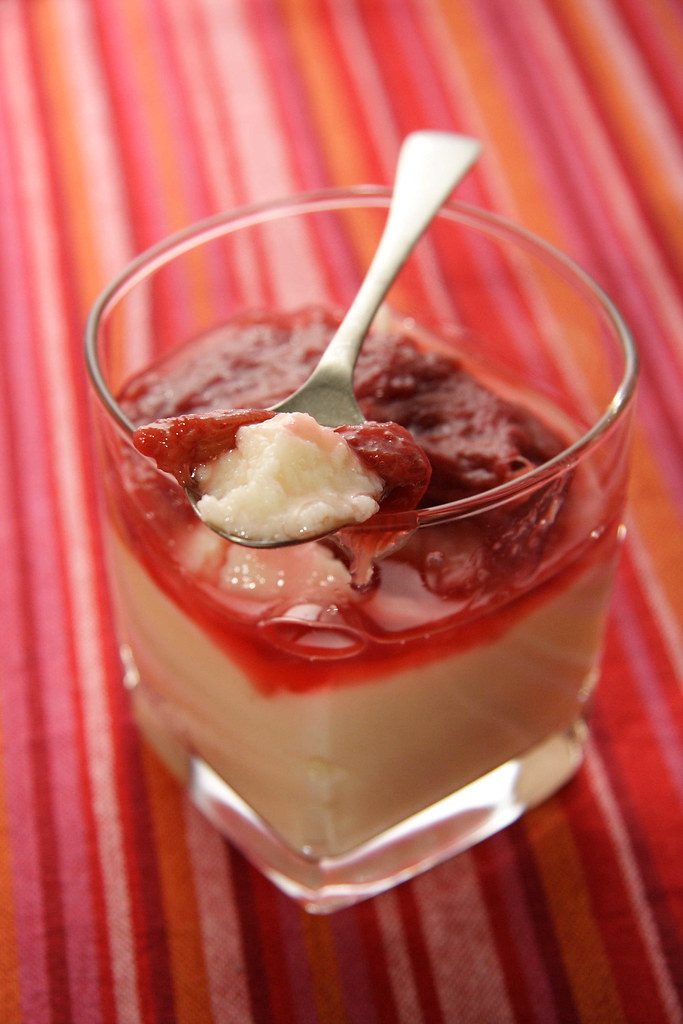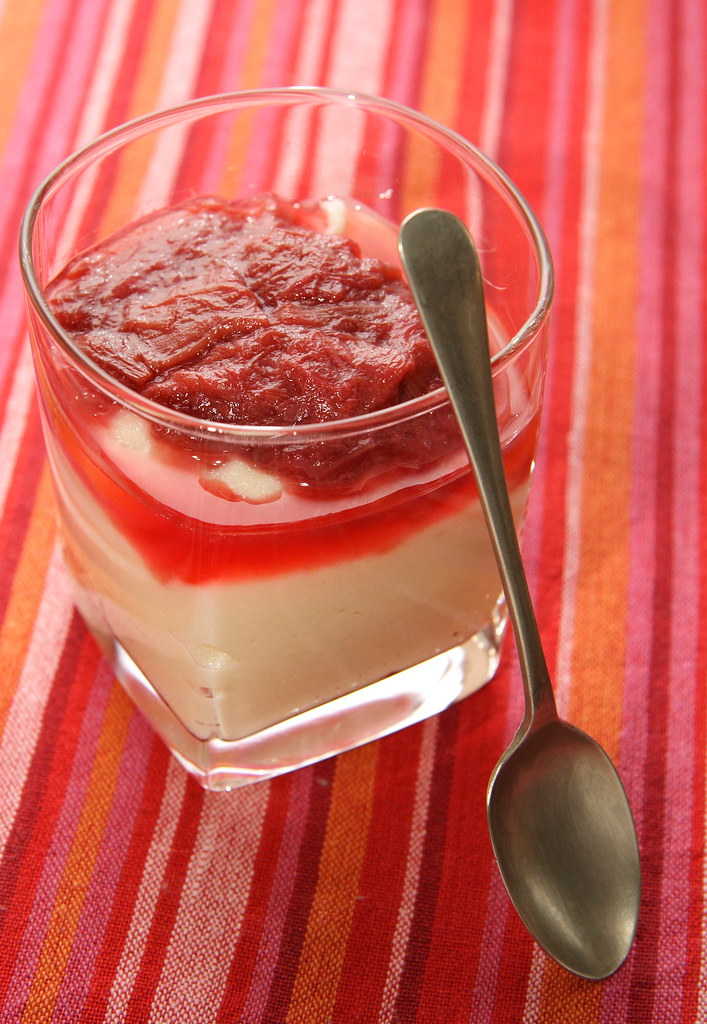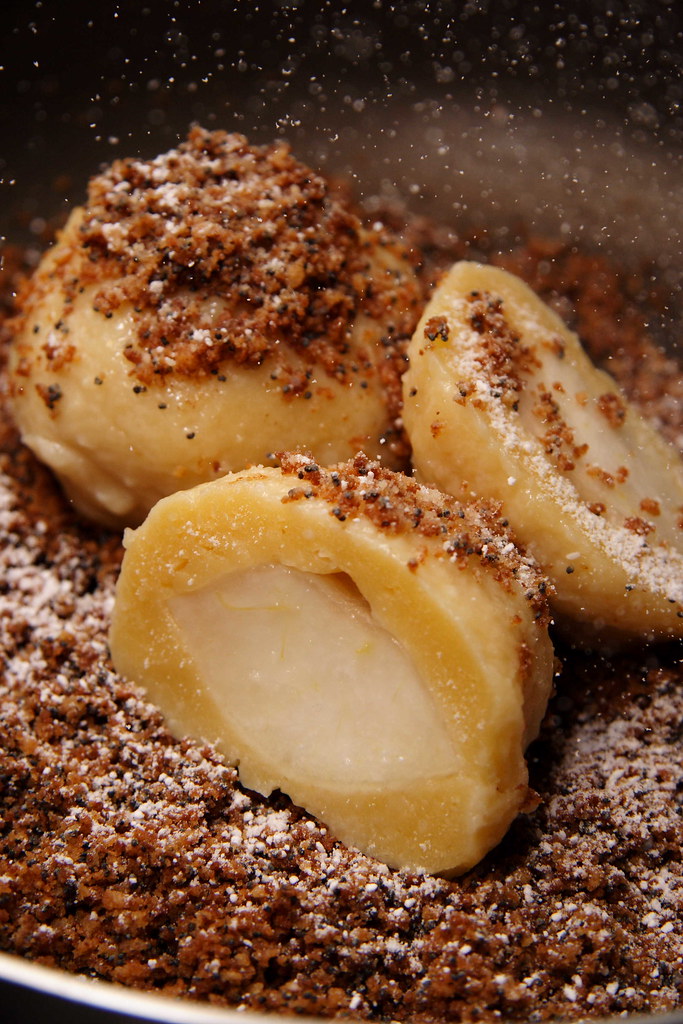
Well, pear, to be precise. When I read about Johanna's challenge for the June edition of the "Waiter, there's something in my..."-event, I was very happy. I had always wanted to make fruit-filled dumplings (you didn't expect me to make savoury ones, right?) but for some reason never got around to do it. And regarding the chilly temperature this past month here in Sydney, my dumplings couldn't be wintery enough.
The only problem: Plums or apricots are just not in season right now and I didn't want to shell out almost six dollars for a tiny punnet of strawberries (it's still a mystery to me that those always seem to be in season in some part of Australia). However, the pear season is in full swing right now so that was settled eventually. In the beginning I had dreamed of some wonderfully complicated filling like pot roasted pears but in order to get dinner ready at a reasonable time, I simply used big chunks of a very ripe packham pear. With a salad as a starter, these pear dumplings are a substantial meal - and when you only eat two dumplings each, it's no overindulgence. However, I don't want to stop anyone...
Special thanks to my boyfriend who first sneered at the idea of a sweet main meal but then helped me taking really good photos: It was his idea to picture the steam and to let it "snow". Needless to say, he ended up liking these dumplings a lot... The cooking time was just right to get sweet and soft pear centres without overcooking them. The fried breadcrumbs added texture and a nice contrast to the soft but still firm dumpling dough. Can't help it, I want more...
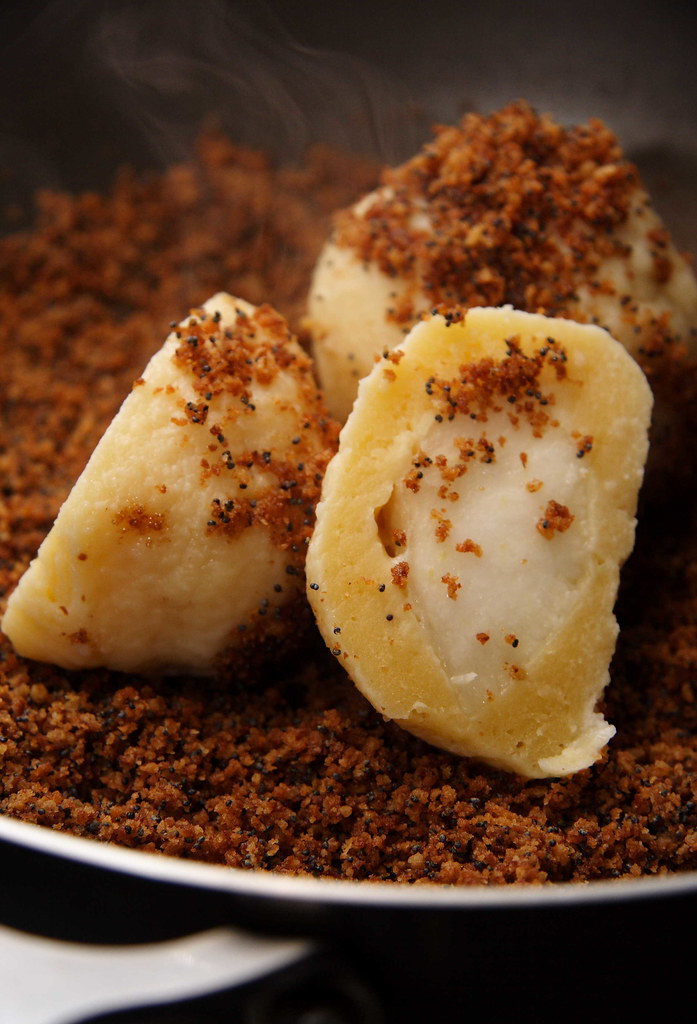
Pear Dumplings
The ingredients
40g butter
250g ricotta
2 egg yolks
1 pinch of salt
250g flour
6-8 tbsp milk
1 large, ripe packham pear, peeled, cored, and cut into six chunks
about 3 litres of salted water
50g butter
100g breadcrumbs
2 tbsp poppy seeds
pinch of cinnamon
pinch of mixed spice
icing sugar for dusting
1
Cream the butter, add egg yolks, ricotta, flour, and salt, mixing well.
2
If your ricotta is rather stiff like mine, you'll end up with a crumbly mixture. Add milk by the tablespoon until the dough comes together in a smooth ball. It will still be rather stiff. If your ricotta is soft, omit the milk.
3
Shape the dough into a thick roll and pop it into the fridge for 30 minutes. In the meantime, prepare the pear.
4
Boil the salted water. Cut the chilled dough roll into 6-8 slices (depending on how big your dumplings are). Flatten each pieces until it's big enough to be wrapped around the pear chunks. Make sure to pinch the seams well (which is a bit easier using naturally round fruit).
5
Carefully put the dumplings into the water and let it come to a boil. Then let the dumplings simmer for about ten minutes. They are ready when floating. Note: Make sure to stir once or twice to prevent them from sticking to the bottom. Otherwise they won't float when ready...
6
In the meantime, melt the butter in a pan. Add bread cumbs, poppy seeds, and spices. Fry until crisp, stirring frequently.
7
Turn the cooked dumplings in the breadcrumbs and sprinkle with lots of icing sugar.
The source
Adapted from Hedwig Maria Stuber: Ich helf Dir kochen
The hint
Makes 6 large dumplings or 8 smaller ones when using smaller fruit. After an entre, serve 2-3 large dumplings per person as main course. As dessert, this is enough for four people.
If you have leftovers, freeze the dumplings and the breadcrumbs seperately. To thaw the dumplings, put into cold water and let come to a boil or use a microwave.
